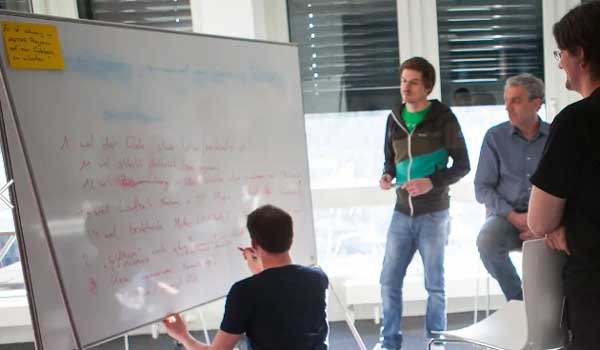Table of Contents:
- Understanding Staff Augmentation
- Unlocking the Benefits
- The Future of Staff Augmentation & Digital Development
- Challenges and Mitigation
- Conclusion
Take a look at the following stats:
- As per Forbes, AI is expected to grow annually at 37.3% from 2023 to 2030.
- A report by MetaVerse Post indicates that just 95 Web3 startups raised a total of $727,287,823.95 in the first quarter of 2023 alone.
- A recent report reveals that the Australian Research Council (ARC) has awarded $34.9 million to form a new Centre of Excellence dedicated to developing optical technologies that are “fundamental to the progression of Industry 4.0”!
So, do these stats ring a bell?
In today’s fast-paced and technology-driven world, businesses face the constant challenge of keeping up with digital advancements. To stay competitive, organisations must adapt and leverage innovative technologies effectively.
A solution that has been gaining popularity in recent years is staff augmentation—a strategic approach to complementing internal teams with external expertise.
This article sheds light on the potential of staff augmentation in driving digital development and revolutionising how businesses operate moving forward.
Understanding Staff Augmentation
Staff augmentation is a flexible staffing strategy that allows companies to augment their existing workforce with specialised talents like freelancers, contractors, or dedicated outsourcing partners from external sources. These sources may be online marketplaces like Fiverr, Upwork, or Seek; or professional social sites like LinkedIn.
Unlocking the Benefits
Resource or Staff Augmentation bridges businesses to a diverse pool of professionals with the necessary skills and experience to meet specific project requirements, especially during crunch periods.
Some benefits businesses avail from augmenting staff are:
- Scalability and Flexibility: Organisations can scale their teams rapidly based on project demands and timelines. They get the agility needed to address erratic workloads and adapt to evolving business needs. Also, companies can quickly ramp up or downsize teams as necessary without the burden of long-term commitments or high hiring costs.
- Access to Expertise: Organisations can tap into a vast network of professionals with specialised expertise. This access can be particularly beneficial in emerging areas where internal resources may be limited. Organisations can leverage the skills and insights of external talent to drive innovation and tackle challenges effectively. For instance, Infinity Workforce Australia, situated in Sydney, specialises in sourcing primarily blue-collar talents for its valued clients.
- Cost Efficiency: Traditional hiring processes can be costly, with recruitment, training, and facilities management. However, Staff augmentation eliminates the need for lengthy hiring procedures and offers more flexible contract arrangements. Companies save both time and money by engaging external talent on a project-by-project basis, optimising resource allocation, and avoiding unwanted costs.
- Accelerated Time-to-Market: Recent trends indicate that time-to-market is critical to success. By expanding work teams, businesses can access additional resources and skills by gaining a competitive advantage, expediting project timelines, and improving delivery times.
- Focus on Core Competencies: Companies can focus on their core competencies by outsourcing specialised tasks. Offloading non-core functions to augmented staff can enhance operational efficiency and productivity. This strategic allocation of resources allows internal teams to work on high-value tasks, fostering innovation and driving business growth.
To acknowledge the importance of contingent and augmented staff, a 2023 Global Human Capital Trends study by Deloitte Insights shared the following:

The Future of Staff Augmentation & Digital Development
As technology advances fast, at times beyond our expectations, specialised digital skills become increasingly crucial. Staff or resource augmentation will fast-track the future of digital development. Here’s how:
- Embracing Emerging Technologies: Organisations can quickly onboard talents skilled in emerging technologies, like artificial intelligence, machine learning, blockchain, and the Internet of Things. This strategy enables businesses to optimise the potential of these technologies toward digital transformation across various industries.
- Remote Workforce: The COVID-19 pandemic accelerated the adoption of remote work. Upwork reports that in 2019, 42% of hiring managers increased sourcing independent talent compared to the previous three years. Staff augmentation seamlessly integrates remote professionals into project teams. Businesses can utilise a global talent pool, irrespective of geographical boundaries. This tactic opens the floodgates for diverse, cross-cultural perspectives and innovative collaboration.
- Knowledge Exchange: Staff augmentation encourages knowledge sharing between internal and external teams. External talents bring proven industry practices and fresh ideas, while internal employees provide organisational context and domain knowledge. The collaborative environment garnered through this exchange of know-how fosters continuous learning and drives digital innovation.
- Agile Project Management: Staff augmentation aligns perfectly with agile project management. By augmenting internal teams with external talent, businesses can embrace agility and flexibility in their digital development initiatives. Agile methodologies, such as Scrum or Kanban, can combine with staff augmentation, triggering iterative and gradual development, fast feedback, and quick change adaption.
- Hybrid Workforce Models: The rise of hybrid workforce models will shape the future of digital development. Internal, full-time employees and team members will work parallelly with augmented staff. The blend of internal and external talents bridges the best of both worlds, creating a digital transformation boom beyond expectations.
APACON, a futuristic IT and Digital firm, embraces and utilises staff augmentation to the best of its potential. APACON engages augmented staff with its core team to develop sustainable solutions in App Development, Digital Marketing, Cloud Services, Cybersecurity, and Business Analytics.

Challenges and Mitigation
While staff augmentation offers numerous advantages, it’s essential to address potential challenges in implementing it:
- Communication and Collaboration: Disruptions in communication channels can hinder setting up effective collaboration between internal and augmented teams. For instance, teams that work remotely from less developed places with frequent electrical outages may not ensure seamless coordination and communication. Organisations should set up systems beforehand to avoid this problem as much as possible.
- Cultural Alignment: Ensuring cultural alignment is crucial in sustaining teams and projects when merging external and internal talent. Whether it’s about the organisation’s values, work ethics, or even local culture, organisations must ensure that the interactions between members don’t harm worldviews or a person’s cultural beliefs. The HR team plays a significant role in setting clear expectations, providing comprehensive onboarding, and promoting a collaborative work culture to align augmented staff with the company’s vision and norms.
- Language Barriers: A problem when onboarding foreign augmented talents is the lack of proper communication. Especially when it comes to proficiency in a language, many fall behind because they fail to communicate the intended message accurately. However, with easily accessible online language courses and tools, organisations can mitigate this barrier by helping team members get a basic grasp of communicative English or other languages.
- Intellectual Property Rights: Protecting and understanding intellectual property (IP) is vital when engaging external talent. Especially with freelancers, the flexibility in work engagements can create scopes for “unauthorised use” of materials or information. Avoid IPR problems with the following steps:
- Knowing the local and international intellectual property laws
- Creating robust contracts and non-disclosure agreements (NDAs)
- Securing data management and safeguarding sensitive information through bulletproof cybersecurity.

Conclusion
Staff augmentation is a game-changer in driving digital development and propelling businesses into the future. Its scalability, access to expertise, cost efficiency, and flexibility empowers organisations to stay ahead in the rapidly evolving digital landscape. By leveraging external talent, companies can accelerate time-to-market, focus on core competencies, and embrace emerging technologies to fuel innovation and growth.
Staff augmentation will play a progressive role as the digital realm continues to evolve. By embracing this strategic approach and unlocking its true potential, firms like APACON help businesses harness specialised skills and effective collaboration toward transformative services in Digital Marketing, Cybersecurity, and App Development for sustained success in the digital age.













